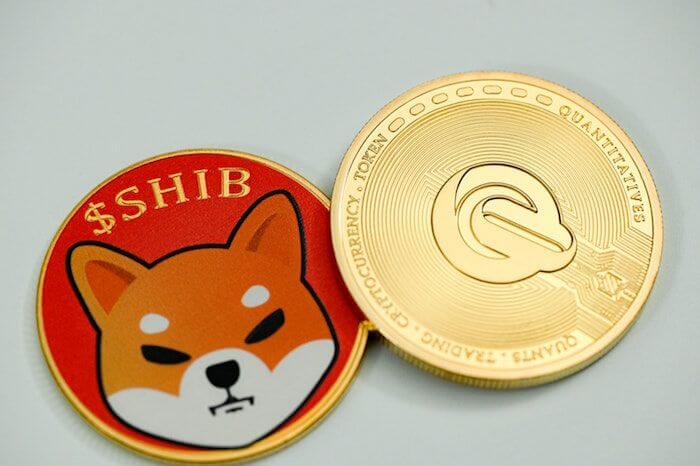Unraveling the Enigma: The NFT Revolution
When we dive into the realm of NFTs, we find ourselves navigating the intricate landscapes of cryptocurrencies. NFT, an abbreviated form of the cryptic term “Non-Fungible Token,” represents a digital asset meticulously birthed from the depths of a blockchain. It all began with the inception of the first enchanting NFT back in the magical year of 2014.
These peculiar tokens, shrouded in their esoteric allure, possess the power to manifest themselves within the realm of a designated owner, binding themselves to tangible assets or even ethereal creations. This property of uniqueness, casting an impenetrable veil over imitation, bestows upon these enigmatic tokens a sense of otherworldly identity. The whims of creators, buyers, and sellers alike can shape and sculpt the NFT landscape. These mystical tokens predominantly find their genesis on the grand stage of Ethereum, an illustrious platform draped in the intricate tapestry of smart contracts and digitized wonders.
Henceforth, NFTs emerge as a form of digital manifestation brimming with an intricate web of information, seamlessly intertwined with the vast expanse of the blockchain. They stand as custodians of identity and harbingers of provenance, speaking volumes through their digital existence.
Unraveling the Mysteries: The Applications of NFTs
The ethereal whispers of NFTs have traversed the realms of artistry, transcending the boundaries of mundane expression. Celebrities, enamored by their enigmatic charm, have begun their celestial dances in the realm of NFTs. These elusive tokens have emerged as conduits for the sale of intangible artworks, blurring the lines between the tangible and the ethereal. Moreover, virtual realms beckon, as NFTs serve as the pillars of trade for elusive virtual real estate, carving out a niche in the digital sands of time.
Embedded within the fabric of blockchain technology, NFTs possess the power to traverse the realms of peer-to-peer trade, unhindered by the shackles of intermediaries. The sacred dance of buying, selling, and trading NFTs unfolds upon the grand stage of decentralized marketplaces, where possibilities blossom like vibrant petals.
Crafting the Tapestry: The Birth of an NFT
Embark upon the creation of your very own NFT by forging an Ethereum address, an emblem of your digital sovereignty, and fashioning a digital wallet, a repository for your ephemeral treasures. Marvel at the kaleidoscope of possibilities as you breathe life into an NFT born from the bowels of artistic prowess—a breathtaking masterpiece, be it a captivating drawing, an entrancing photograph, or even an enchanting GIF. Let not the symphony end there, for NFTs embrace the harmonious melodies of songs, the vivid tales woven within movies, the captivating allure of game cards, and yes, even the cryptic brevity of a tweet.
As your Ethereum address stands tall and your digital wallet yearns to be filled, set forth on a quest to unearth the perfect marketplace for your treasured NFTs.
The Enchanted Realms: Platforms of Destiny
Amidst this labyrinth of ethereal creation and trade, stand the mighty pillars of NFT platforms, each adorned with its own distinct charm. The behemoth known as OpenSea reigns supreme, casting its vast net to capture the hearts of creators and collectors alike. Nifty Gateway, a celestial realm that beckons to the stars, entices the glimmering presence of esteemed celebrities. Seek solace within the bosom of Mintable, a haven for thrifty souls yearning to embrace the wonders of the NFT realm. SuperRare, the hallowed grounds of artistic virtuosos, graces the land with its stringent curation by digital art experts. Lastly, discover the interconnected marvels of Rare, a sprawling landscape where the diverse tapestry of NFTs unfurls in all its grandeur, seamlessly linked with the omnipresent OpenSea.
Beyond the veil of artistry, a world of creators finds solace within the NFT cosmos. Ponder upon the infinite possibilities that await, for NFTs possess the potential to transcend artistic realms, becoming indispensable companions on the enchanting journey of our daily lives.
May this grand exposition on the elusive concept of NFTs have cast a luminous radiance upon your path, illuminating the secrets concealed within this enigmatic phenomenon. Should you yearn for further enlightenment from our esteemed blockchain experts, we eagerly await your call.
Discover an anthology of captivating articles on our illustrious blog, where the realms of innovation and the ever-evolving tapestry of technological wonders are unveiled in the universal language of English.


